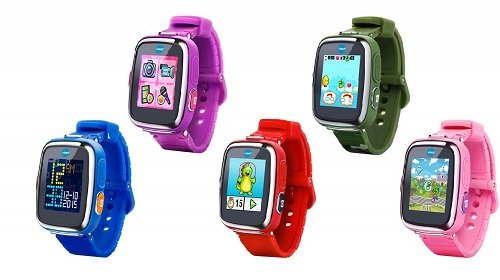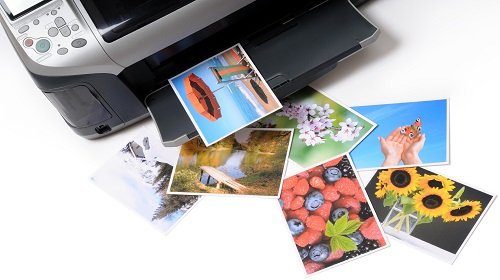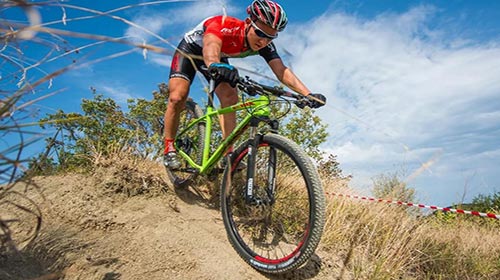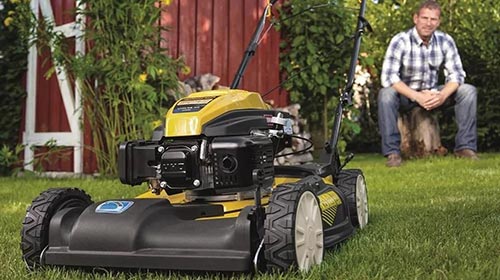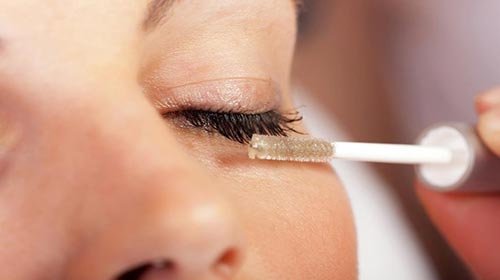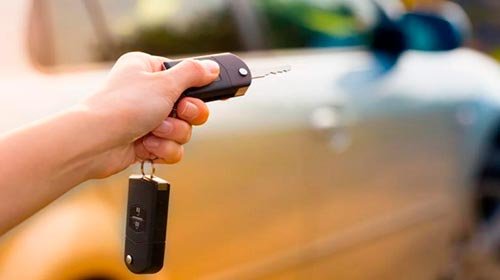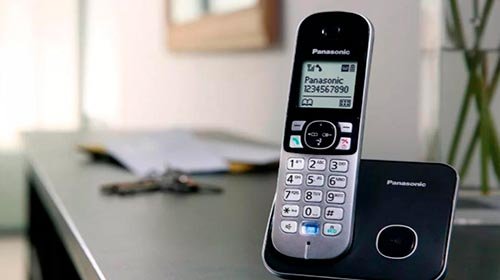For modern children, gadgets have already ceased to be an unusual toy - they are necessary for training, leisure activities, communication with relatives and communication with friends. The main task of parents - the choice of a suitable device. Important criteria are the matrix and processor. From the first depends on the brightness of the image, resolution and viewing angle. The second is responsible for the speed of downloading applications and responding to user actions.
We know that children from 4 years and older like devices with a large number of bright pictures and unusual features. We reviewed the main characteristics of the tablet and learned how to choose the best. Dividing the information into 10 tips, presented important criteria for the child.
Content:
Screen resolution
How to choose the screen resolution of the children's tablet
Screen resolution is the most important criterion for a child of any age. 4-5-year-old will be interesting to watch the big bright pictures, and older children will be able to play a variety of games. In this case, parents usually worry about whether the use of the device is harmful to the eyes.
The more pixels on the tablet screen, the better the image will look and the less grains (noise) will appear. It is recommended to choose a high screen resolution in accordance with the age of the child. For example, there are 7-inch tablets with characteristics of 1280x720 or 2048 × 1536 pixels. The resolution of 800x600 is already outdated and will suit only very young children.
No iron and bright shell will not help the tablet if the image quality is low. In addition to the number of pixels, there are 3 types of matrix that affect the picture:
- TN first appeared, it can still be found in inexpensive Chinese tablets. The picture is clear and colorful, but not as bright as the more modern versions. Will suit children from 4 to 6 years, perfectly will cope with big images.
- The most popular is IPS, which is used by almost all manufacturers. It gives a wide viewing angle.– no matter how the child turns the device, the image will always be visible. Suitable for children from 4 to 10 years who spend a lot of time on the tablet.
- Recently appeared matrix Amoled, working on LEDs. A huge plus is the absence of blinking, each pixel displays its own color and instantly responds to user actions. Such screens are the least harmful to eyesight, but they are expensive.
Tablet operating system
Which operating system should be preferred?
There are 3 operating systems on the tablet market: Windows, iOS and Android. It depends on the interface, the number of free applications and programs, usability and even security. Each system has strengths and weaknesses, so parents should take into account the child’s preferences:
- The most popular is Android, which is installed on tablets of any price category of most manufacturers. It is considered optimal for children from 7 to 10 years due to the huge number of free applications. The child will have access to the Play Market with thousands of games. However, Android is very picky about battery power and wears out the battery faster than anyone. Parental control does not always work as it should, skipping applications not according to age.
- Apple releases its gadgets only on iOS, which is considered elite. It quickly responds to user actions, has a beautiful interface, very rarely hangs and does not consume a lot of battery. However, the cost of such tablets (especially new ones) reaches several tens of thousands of rubles, the price of accessories is also too high.
- Many probably know about the Windows operating system. It is very easy to use and is perfect for children 4, 5, 6 years old.They are not yet actively launching free applications (of which Windows is a bit) and do not often turn on the browser. The main weakness of the system - viruses that are easy to pick up, even with the current parental control.
CPU
What is the optimal processor power of the children's tablet?
Tablets for children are equipped with powerful processors, because all the bright and interesting games are very demanding on the hardware. A device without entertainment for a child of any age will quickly cease to be attractive. Judging by the parents, the most powerful gadget is also not needed: such devices are designed for professional artists and photographers, not children. All processors can be divided into 3 categories according to the number of cores:
- 2 cores. This processor is suitable for children 4, 5, a maximum of 6 years. They are able to run cartoons of the highest quality, upload any pictures and simple 2D games. 2-core processors are already considered obsolete, so these devices are pretty cheap. In the reviews, parents say that the tablet lasts for a year or two, then you need to buy a more powerful model.
- 4 cores. These tablets are best suited for children. They are able to run most games, download long movies, open several browser tabs. Suitable for children 6, 7, 10 years old and even higher. The cost of these tablets a little more than the previous ones, but they will last much longer.
- From 6 cores. Such tablets are considered devices for adults, they load heavy programs and games with any requirements. The device costs a lot of money because of its power that a small child does not use. May be suitable for children who are seriously interested in drawing and working in programs like Photoshop.
Judging by the reviews, one of the popular processor options for children is MTK 8312 with two cores. It shows good results even with 3D graphics and is very energy efficient. Runs all applications for children from 4 to 6 years and weighs a little.
RAM
How to choose the amount of RAM for a children's tabletThe memory stores information that the child can use at any time. It affects the performance of the tablet, the number of freezes and application download time. The more tabs the child opens, the more memory is used. Children are often impatient, so a slow tablet only upsets them. In order for the browser, games, music, movies and pictures to load in seconds, you need to buy a device with enough memory. There are a huge number of options on the market, but only four are popular:
- 1 gigabyte. The minimum value is suitable for children 4-5 years. This amount of memory is enough to load one simple game, view small cartoons, play music in the background. These tablets are inexpensive, you can buy a device for a couple of years, then replace it with a modern one.
- 2 gigabytes. It occurs in tablets most often, is perfect for a child who does not load heavy 3D games. 2 GB is enough for comfortable searching on the Internet, launching several applications, watching heavy films and cartoons. These tablets are more expensive, but remain relevant longer. There are good options for Apple, you can find decent offers with other operating systems.
- 3 gigabytes. Allows you to open any number of applications and comfortably include most games. This amount of memory requires a wide screen to display the colorful and drawing films and photos. The cost of the tablets is high, but the child will be delighted. Gadgets with even more memory are designed for adults working with heavy programs, and children are not needed.
Weight
What is the tablet weight and screen size for kids?The standard weight of the tablet is 500-600 grams, it is suitable for children 6-10 years old. For adults developed widescreen versions of 700 grams or more. For young children, it is recommended to take a device up to 300 grams. Even with a case the weight will not exceed 400 grams, which is perfect for walking with a tablet or watching long cartoons.In many ways, the feeling of the gadget in the hands depends on the diagonal of the screen:
- 7 inches. The smallest tablets, perfect for a child of 4-5 years, as well as a pocket device. They usually have a weak iron, but are able to run simple applications. For example, educational games offer children to use a tablet like a steering wheel or a map, so light weight is a big advantage.
- 8 inches. These tablets weigh about 400 grams. They fit the best speakers and more powerful hardware. Apple has high-speed tablets that are relatively inexpensive. However, not all films will be able to be viewed comfortably: black bars will remain on the top and bottom, since the resolution is considered non-standard.
- 9.7 inches. Ideal for children of 7-10 years who love to run games and sit on the Internet. On this screen you can see the smallest details, and the weight is about 500 grams.
- From 10 inches. Such tablets can be called portable computers, since the large screen and powerful processor allows you to use them to the maximum. However, children are hard to hold the device weighing 700 grams, hands will quickly tire.
Battery
How to choose a battery with optimal performance
Without going into technical details, we can say that the battery is a small detail in the tablet, on which the operating time of the device depends. Manufacturers install 2 types of batteries in modern devices:
- charge control;
- without charge control.
Thanks to this small feature, the battery works much better. The controller analyzes the status of the battery and turns it off if the value drops to 3.2 volts. It does not allow the battery to fully discharge, because the child will not follow this.
There are several additional parameters that need attention:
- Capacity. In tablets of average cost, the battery is placed on 5000-6000 mAh. In versions stronger the capacity reaches 10,000-12,000 mAh. It is impossible to verify the accuracy of the data when buying, it is recommended to stop the choice of well-known manufacturers. The average power is enough for active use within 5-6 hours.
- Current strength This parameter determines how fast the device will charge. Standard tablets require a current of 2.1 amperes. It is not recommended to purchase a gadget with a lower value, otherwise the child will wait half a day until the device is ready to work.
- The number of USB inputs. The battery charges faster from two power sources, so large tablets have several ports. However, this can be useful only with very active use; children aged 4, 5 and 6 years of age do not usually use this.
- Equipment. If the family often travels with a tablet, it is convenient to choose it with various adapters. For home use, one wire is enough.
- Additional functions (flashlight, WiFi in the background, etc.) are faster to charge. The child, they probably will not need. Parents in the reviews say that it is better to take a tablet without unnecessary "chips", which puts the battery more slowly.
Internet access
Does the child need internet access?Almost all tablets have access to Wi-Fi, however many still work with 3G and 4G networks. This function is necessary for children of 7-10 years old who are out of the house without parents. 3G appeared first and is considered the most common network. 4G is only gaining momentum, providing fast access to the Internet.
3G works at a speed of 1 Mbit / s, making it possible to exchange not very heavy files, send messages and listen to music online. But the fourth generation downloads data to the network at a speed of 10 Mbit / s and is considered the fastest.
If parents are willing to spend significant funds on the tablet, and the child is already old enough to actively sit on the Internet outside the home, then 4G will be the best option. It allows you to watch movies online in high quality, have fun in online games and download any amount of information. The child will be able to listen to music, turn on the video and chat with friends without hangs and glitches. 4G tablet allows you to use all the capabilities of the device anywhere.
Most expensive models have a built-in 4G modem.The most popular tablets are iPad, Samsung Galaxy and Motorola Droid XyBoard. However, not everywhere in Russia, the device will be able to catch the desired network, since they operate at different frequencies. The data are listed on the packaging of the device. In Russia, there are 5 frequency settings that vary depending on the operator. That is, even an expensive tablet does not always find 4G.
The main disadvantage of such a module for parents is the price. Wi-Fi is enough for a child aged 4-6 years, and 3G is suitable for children from 7 to 10. For example, iPad Air 2 with a maximum memory capacity costs about 31 thousand rubles, and with a 4G modem - more than 42 thousand. With budget models the same.
Applications
How to choose a tablet with the best free apps
Companies do not get tired of promoting their app stores. Apple talks about the quality control of the App Store, Google announces tens of thousands of positions in the Play Market, and Microsoft reports on the successful replenishment of the Windows Phone Marketplace with new games. Despite loud advertising slogans, most of the programs in all 3 stores are either not suitable for children, or they will not be interested. In the App Store alone, more than 65% of applications are abandoned by publishers. When choosing a tablet, it is important to consider the strengths and weaknesses of each store:
- Windows offers unique free applications for watching movies, TV shows and cartoons. Most of the material is stolen from the copyright holder, which excites little children and parents. However, the company does not care much about the quality of applications. Many copy the popular name, demanding money for it, but in the end it turns out to be quite another. Microsoft has long promised to deal with fraudsters, but so far they are not very good at it.
- Apple is known for amazing quality control. Each application is tested and received a rating. If it is said that the game is suitable for a child, then this can be trusted. If the user noticed the error and sent a complaint, the developer must solve the problem within a month. However, there are relatively few free applications, and the prices are very high.
- Google initially wanted to be the largest store, missing almost all developers. Their unique search algorithms allow you to select the desired application from the thousands offered. The store is associated with Google+, reviews of friends can be seen immediately. However, most applications can not boast of good quality. Despite the huge selection, download in the end is nothing.
Price
The main price categories for children's tabletsThe average cost of a standard tablet is about 10 thousand rubles. For children from 7 years old it is recommended to take the device a bit more expensive (about 15 thousand), since it will remain relevant longer. Among the low-end brands, parents highlight Lenovo, which produces tablets for children of any age. Of the more expensive can be noted:
- Apple iPad 3 16Gb (16 thousand);
- Samsung Galaxy Tab 3 8.0 SM-T311 (15 thousand).
If the child does not care about the brand, you can find good options for up to 10 thousand, especially for children 4-6 years. For example, a powerful iron and a good screen have:
- Acer Iconia Tab A1-810 (8 thousand);
- Lenovo IdeaTab A3000 (7 thousand).
Additional functions
What optional "chips" will be useful to the child?Additional features directly affect the cost of the device. Not all of them are useful to children, we considered the most popular:
- Memory card. Each tablet has an internal memory that varies from 16 to 128 GB. You can initially buy an inexpensive model, and eventually acquire a microSD. The card is inserted into a special slot and serves as an additional place to store information. Apple does not have this option, but there are many suggestions for Windows and Android.
- Online maps. Sometimes they are downloaded after purchase, most often already loaded into the tablet. Parents are advised to check that the cards can be used without connecting to the network.
- Camera. If a child has a simple phone that can not take pictures, the tablet can be a good replacement. Of course, the quality of the picture does not compare with smartphones, but a small child is unlikely to want to create masterpieces. A camera with an extension of 8 pixels makes photos without unnecessary noise, 5-6 pixels is no longer enough.
- Connectable keyboard. If the child plans to do homework at the tablet or spend time playing games, you can not do without a keyboard.Most often, it is purchased separately, as long as the gadget has a suitable connector.

